-
- PCB TYPE
- PRINTED CIRCUIT BOARD PROTOTYPE ALUMINUM PRINTED CIRCUIT BOARD R&F PCB FPC HIGH FREQUENCY PCB HIGH-TG PCB HEAVY COPPER PCB HDI PCB PCB FOR LIGHTING METAL CORE PCB
time:Jul 07. 2025, 11:01:44
In the dynamic realm of modern electronics, printed circuit boards (PCBs) are the unsung heroes that underpin the functionality of countless devices. Among the diverse array of PCB materials, aluminum PCBs have emerged as a game - changer, offering a unique combination of thermal, electrical, and mechanical properties that make them indispensable in a wide range of applications. This article explores the intricacies of aluminum PCBs, delving into their material science, design considerations, manufacturing processes, quality assurance measures, real - world applications, and emerging market trends.
Material Science of Aluminum PCBs
Aluminum Substrate Properties
The aluminum substrate lies at the heart of an aluminum PCB, and its properties are what set these boards apart. Aluminum is renowned for its exceptional thermal conductivity, which far surpasses that of traditional PCB materials like fiberglass - reinforced epoxy (FR4). This high thermal conductivity enables aluminum PCBs to efficiently dissipate the heat generated by high - power components, such as LEDs, power transistors, and microprocessors. By effectively managing heat, aluminum PCBs prevent thermal stress, component degradation, and premature failure, ensuring the reliable operation of electronic devices.
In addition to its thermal prowess, aluminum offers a favorable strength - to - weight ratio. This characteristic makes aluminum PCBs lightweight yet robust, making them ideal for applications where weight is a critical factor, such as in aerospace, automotive, and portable electronics. The formability of aluminum also allows for the creation of complex shapes and designs, enabling designers to optimize the layout of components and traces on the PCB.
Dielectric Layers in Aluminum PCBs
The dielectric layer in an aluminum PCB serves as an electrical insulator between the conductive traces and the aluminum substrate, while also facilitating heat transfer. The choice of dielectric material is crucial for balancing electrical insulation and thermal performance.
Polyimide - based dielectrics are often favored in high - performance applications that require excellent electrical insulation and high - temperature resistance. They can withstand elevated temperatures without significant degradation, making them suitable for power - intensive circuits where heat generation is substantial. Polyimide dielectrics also offer low dielectric loss, which helps to minimize signal attenuation and improve the overall efficiency of the electrical circuit.
Ceramic - filled epoxies are another popular option for dielectric layers in aluminum PCBs. These materials combine the advantages of epoxy resins, such as good adhesion and processability, with the high thermal conductivity of ceramic fillers. The addition of ceramic fillers enhances the heat - transfer capabilities of the dielectric layer, allowing for more efficient heat dissipation from the components to the aluminum substrate. Ceramic - filled epoxies provide a cost - effective solution for applications that require a balance between electrical performance and thermal management.
Conductive Traces and Surface Finishes
Copper is the material of choice for the conductive traces in aluminum PCBs due to its low electrical resistance and excellent conductivity. The thickness and width of the copper traces are carefully designed based on the current - carrying requirements of the circuit. In high - current applications, thicker copper traces are used to reduce voltage drops and prevent overheating.
Surface finishes play a vital role in protecting the copper traces from oxidation and enhancing their solderability. Electroless nickel immersion gold (ENIG) is a widely used surface finish that provides a smooth, flat surface with excellent corrosion resistance and solderability. It is particularly suitable for applications that require fine - pitch soldering and high - reliability connections. Organic solderability preservatives (OSP) are another option, offering a thin, transparent coating that protects the copper from oxidation while maintaining good solderability. OSP is a cost - effective solution for applications where a less expensive surface finish is acceptable.
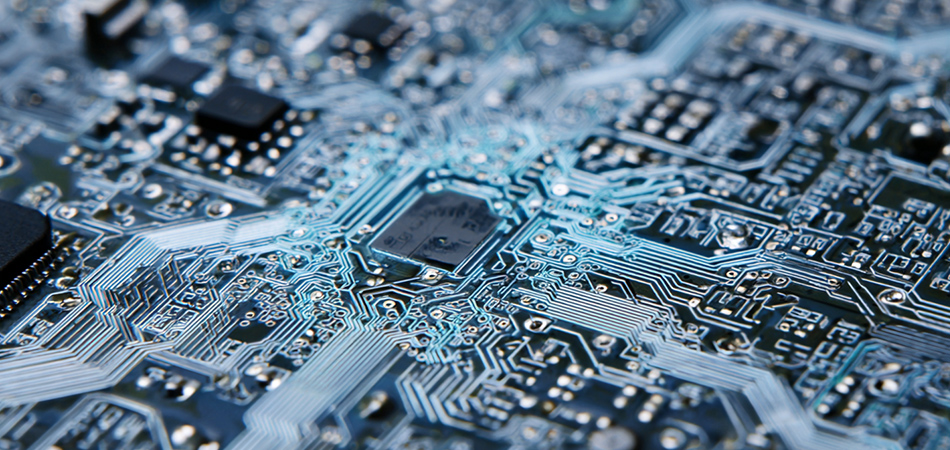
Design Considerations for Aluminum PCBs
Thermal Management Design
Thermal management is the primary design consideration for aluminum PCBs, as effective heat dissipation is essential for maintaining the performance and reliability of the electronic components. Thermal vias are a key feature in aluminum PCB design, serving as direct pathways for heat to transfer from the components to the aluminum substrate. These vias are strategically placed near heat - generating components to maximize heat dissipation and minimize thermal resistance.
The size, number, and distribution of thermal vias are carefully optimized based on the power requirements and thermal characteristics of the components. In addition to thermal vias, heat sinks and heat spreaders can be integrated with the aluminum PCB to further enhance heat dissipation. Heat sinks increase the surface area available for heat transfer, while heat spreaders help to evenly distribute the heat across the substrate, reducing the formation of hotspots.
Electrical Design
The electrical design of aluminum PCBs focuses on ensuring the reliable operation of the electronic circuit. This includes designing the appropriate power distribution networks, signal traces, and grounding systems. In high - frequency applications, careful consideration must be given to the impedance matching of the signal traces to minimize signal reflections and ensure signal integrity.
Electromagnetic compatibility (EMC) is also an important aspect of electrical design for aluminum PCBs. The aluminum substrate can act as a shield, helping to reduce electromagnetic interference (EMI) generated by the circuit. However, proper shielding and filtering techniques may still be required to ensure compliance with EMC standards, especially in applications where EMI sensitivity is high.
Mechanical Design
The mechanical design of aluminum PCBs takes into account factors such as the physical dimensions of the board, the mounting method, and the mechanical stresses it may encounter during operation. The size and shape of the board are determined by the requirements of the electronic device and the layout of the components.
Mounting holes and attachment mechanisms are incorporated into the board design to securely fasten the PCB to the enclosure or other mechanical structures. In applications where the PCB is subject to vibration, shock, or mechanical stress, additional reinforcement features, such as stiffeners or protective enclosures, may be added to enhance the mechanical durability of the board.
Flexibility and Rigid - Flex Design Considerations
In some applications, flexibility is required in the PCB design to accommodate movement, bending, or folding. Aluminum PCBs can be designed with flexible dielectric layers and conductive traces to achieve a certain degree of flexibility. Rigid - flex aluminum PCBs combine the advantages of rigid and flexible PCBs, allowing for complex three - dimensional designs and the integration of multiple functions in a single board.
When designing flexible or rigid - flex aluminum PCBs, special considerations must be given to the mechanical stress and strain on the flexible regions. The selection of materials, the design of the bending radius, and the routing of the traces all need to be carefully optimized to ensure the reliability and longevity of the flexible PCB.
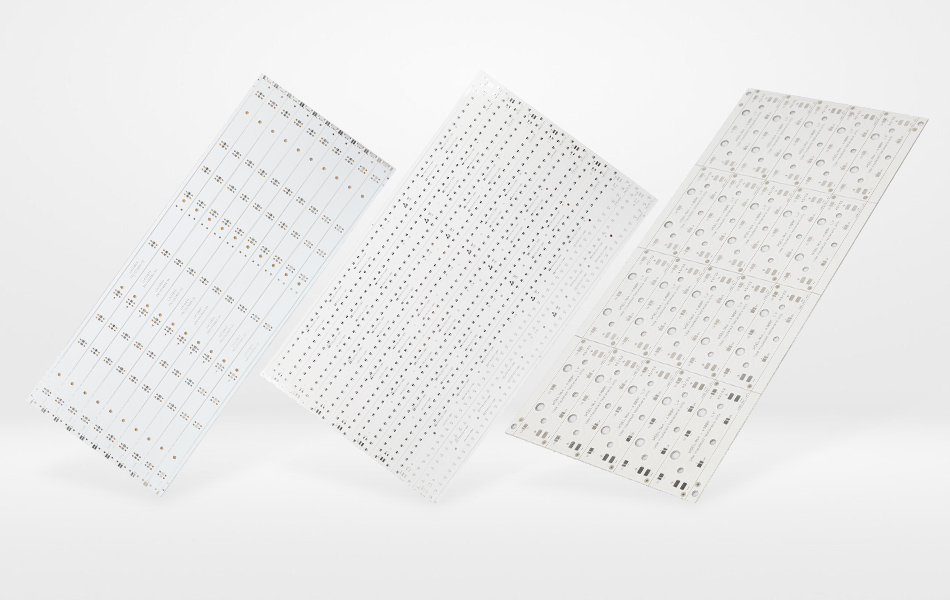
Manufacturing Processes of Aluminum PCBs
Circuit Board Fabrication
The fabrication of aluminum PCBs involves a series of processes similar to those used for traditional PCBs, but with some unique considerations due to the properties of the aluminum substrate. Drilling is the first step in the fabrication process, which creates holes for vias, component mounting, and other purposes. Mechanical drilling and laser drilling are the two commonly used methods for drilling holes in aluminum PCBs. Mechanical drilling is a cost - effective option for larger holes, while laser drilling offers higher precision and is suitable for creating smaller holes and complex patterns.
Plating is used to deposit a layer of copper on the drilled holes and the surface of the board to ensure electrical conductivity. Electroless plating and electrolytic plating are the two main types of plating processes used in aluminum PCB fabrication. Electroless plating is used to deposit a thin layer of copper on non - conductive surfaces, while electrolytic plating is used to build up the copper layer to the desired thickness.
Lamination is the process of bonding the different layers of the PCB together, including the aluminum substrate, dielectric layer, and copper traces. High - pressure lamination and vacuum lamination are the two commonly used methods for lamination. High - pressure lamination uses heat and pressure to bond the layers together, while vacuum lamination uses a vacuum to remove air bubbles and ensure a uniform bond.
Component Mounting
After the circuit board is fabricated, the next step is to mount the components onto the board. Surface - mount technology (SMT) is the most commonly used method for mounting components on aluminum PCBs. SMT involves placing the components onto the surface of the board using automated pick - and - place machines and then soldering them in place using reflow soldering or wave soldering.
Reflow soldering is the most widely used soldering method for SMT components on aluminum PCBs. It involves heating the board in a reflow oven, which melts the solder paste and creates a strong electrical and mechanical connection between the components and the board. Wave soldering is another soldering method that is commonly used for through - hole components. It involves passing the board over a wave of molten solder, which solders the components in place.
Surface Finishing and Coating
Surface finishing and coating are important steps in the manufacturing process of aluminum PCBs to protect the board from corrosion, oxidation, and mechanical damage. As mentioned earlier, ENIG and OSP are two popular surface finishes for aluminum PCBs. In addition to these, other surface finishes, such as hot air solder leveling (HASL), electroless nickel electroless palladium immersion gold (ENEPIG), and immersion silver, may also be used depending on the specific requirements of the application.
Coating the PCB with a protective layer, such as a conformal coating, can further enhance its durability and reliability. Conformal coatings provide a barrier against moisture, dust, chemicals, and other environmental contaminants, protecting the components and traces on the PCB from damage.
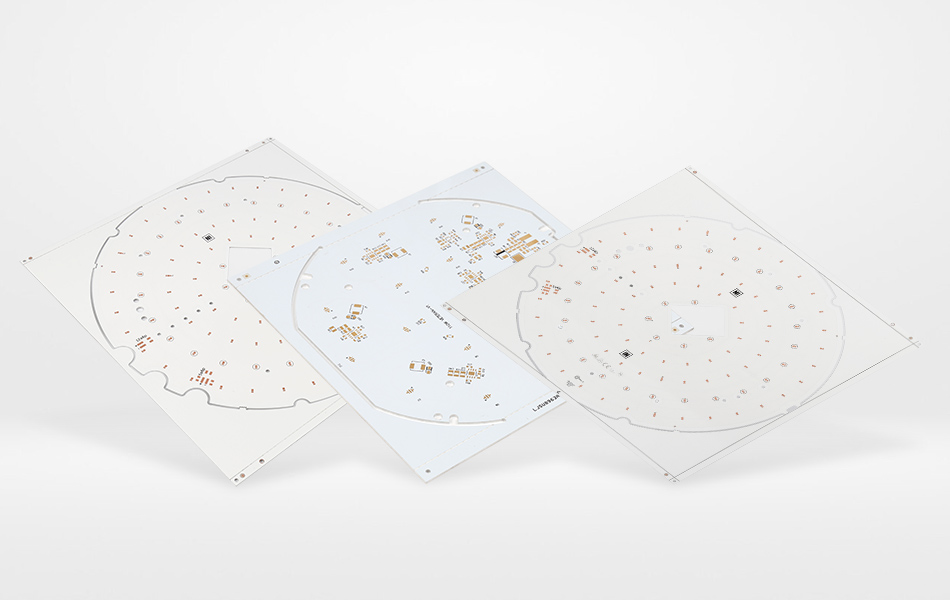
Quality Assurance in Aluminum PCB Production
Incoming Material Inspection
Before the production process begins, all incoming materials, including the aluminum substrate, copper foil, dielectric materials, and components, are thoroughly inspected. The aluminum substrate is checked for its flatness, purity, alloy composition, and mechanical properties. Copper foil is inspected for thickness uniformity, surface roughness, and the presence of any defects.
Dielectric materials are tested for their electrical insulation properties, thermal conductivity, and dielectric constant. Components are verified for their specifications and functionality. Only materials and components that meet strict quality standards are approved for use in the production process to ensure the overall quality of the final aluminum PCB.
In - Process Quality Control
During the manufacturing process, various quality control measures are implemented at different stages to monitor and ensure the quality of the aluminum PCBs. After drilling, the holes are inspected for size accuracy, roundness, and the presence of burrs. In the plating process, the thickness and uniformity of the copper layer are continuously monitored.
During component mounting and soldering, automated optical inspection (AOI) systems are used to detect any misaligned or missing components, as well as soldering defects such as cold joints, bridges, or insufficient solder. In - process testing of electrical parameters, such as resistance, capacitance, and impedance, may also be conducted to ensure the proper functioning of the circuit at each stage of production.
Final Testing
Once the aluminum PCB is fully manufactured, it undergoes a series of final tests to verify its functionality and reliability. Electrical tests include checking for short circuits, open circuits, and proper operation of the electrical components and circuits. Functional testing is performed to ensure that the PCB meets the specified performance requirements of the electronic device.
Thermal testing is also an important part of the final testing process for aluminum PCBs. This includes measuring the temperature distribution on the PCB under normal operating conditions and simulating extreme temperature conditions to evaluate the thermal performance and reliability of the board. Environmental testing, such as humidity testing, salt spray testing, and vibration testing, may also be conducted to assess the PCB's ability to withstand harsh environmental conditions.
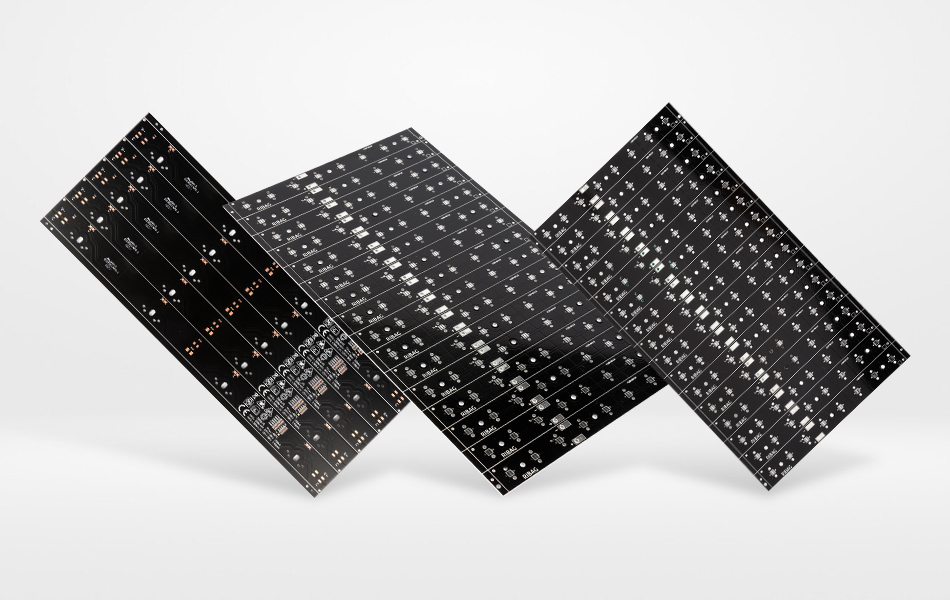
Applications of Aluminum PCBs
LED Lighting
One of the most common applications of aluminum PCBs is in LED lighting systems. LEDs generate a significant amount of heat during operation, and efficient heat dissipation is crucial for maintaining their performance and lifespan. Aluminum PCBs provide an excellent thermal pathway for heat to escape from the LEDs, ensuring that they operate at optimal temperatures.
In LED lighting applications, aluminum PCBs are used in a variety of products, including residential and commercial lighting fixtures, streetlights, automotive lighting, and horticultural lighting. The design flexibility of aluminum PCBs allows for the creation of customized lighting solutions with different shapes, sizes, and light distribution patterns.
Power Electronics
Power electronics devices, such as power supplies, inverters, and motor controllers, often generate a large amount of heat due to the high power levels involved. Aluminum PCBs are well - suited for these applications as they can effectively dissipate the heat and prevent thermal runaway.
In power electronics, aluminum PCBs are used to mount power transistors, diodes, and other high - power components. The thermal management capabilities of aluminum PCBs help to improve the efficiency and reliability of power electronics devices, reducing the risk of component failure and extending the lifespan of the equipment.
Automotive Electronics
The automotive industry has seen a growing adoption of aluminum PCBs due to their lightweight and high - performance characteristics. Aluminum PCBs are used in a wide range of automotive applications, including engine control units (ECUs), dashboard displays, lighting systems, and advanced driver - assistance systems (ADAS).
In automotive electronics, the ability of aluminum PCBs to withstand harsh environmental conditions, such as high temperatures, vibrations, and moisture, is crucial. The lightweight nature of aluminum PCBs also helps to reduce the overall weight of the vehicle, contributing to improved fuel efficiency and performance.
Aerospace and Defense
In aerospace and defense applications, where reliability, weight, and performance are of utmost importance, aluminum PCBs play a vital role. Aluminum PCBs are used in avionics systems, radar systems, communication systems, and other critical electronic equipment.
The high thermal conductivity and strength - to - weight ratio of aluminum PCBs make them ideal for aerospace and defense applications. They can withstand the extreme temperatures, pressures, and vibrations encountered in these environments, ensuring the reliable operation of the electronic systems.
Consumer Electronics
Consumer electronics devices, such as smartphones, tablets, laptops, and wearable devices, are becoming smaller, more powerful, and more energy - efficient. Aluminum PCBs are increasingly being used in these devices to meet the demanding requirements of heat dissipation, electrical performance, and mechanical durability.
In consumer electronics, the thin and lightweight design of aluminum PCBs allows for the creation of compact and portable devices. The excellent thermal management capabilities of aluminum PCBs also help to prevent overheating of the components, ensuring the smooth operation of the devices and extending their battery life.
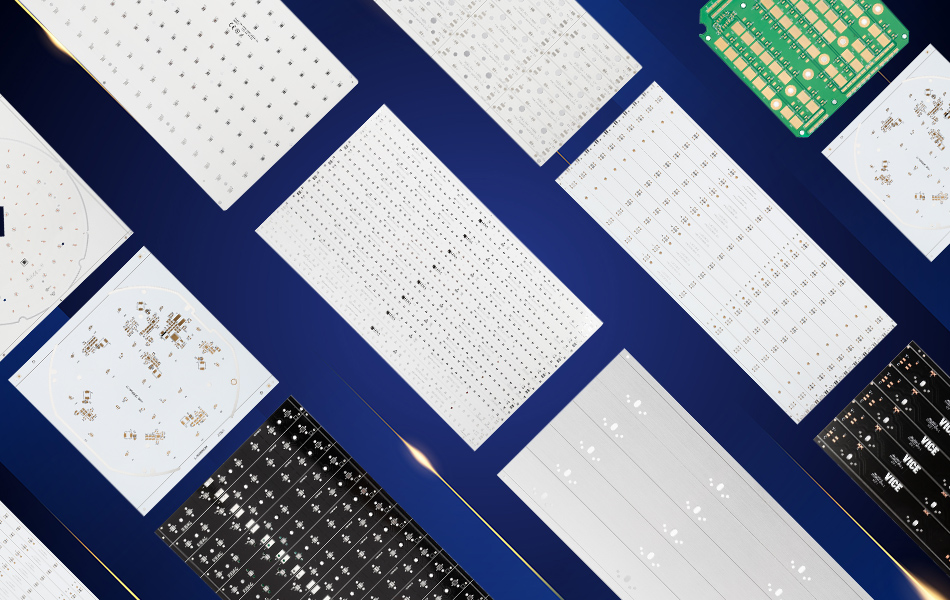
Market Trends of Aluminum PCBs
Growing Demand for Energy - Efficient Solutions
The increasing focus on energy conservation and environmental sustainability is driving the demand for energy - efficient electronic solutions. Aluminum PCBs, with their excellent thermal management capabilities, play a crucial role in improving the energy efficiency of electronic devices. By effectively dissipating heat, aluminum PCBs reduce the power consumption of components and prevent energy losses due to overheating.
In applications such as LED lighting and power electronics, the use of aluminum PCBs can significantly reduce energy consumption and carbon emissions. As governments around the world implement stricter energy - efficiency regulations and incentives, the demand for aluminum PCBs is expected to continue to grow in the coming years.
Advancements in Miniaturization and High - Density Integration
The trend towards miniaturization and high - density integration in the electronics industry is also driving the development of aluminum PCBs. As electronic components become smaller and more powerful, the design and manufacturing of PCBs need to adapt to accommodate these changes.
Aluminum PCBs are being developed with thinner substrates, smaller vias, and finer - pitch traces to meet the requirements of miniaturization and high - density integration. Advanced manufacturing techniques, such as laser drilling, high - density interconnect (HDI) technology, and micro - via technology, are being used to create more complex and compact aluminum PCBs. These advancements enable the development of smaller, more powerful, and more energy - efficient electronic devices.
Integration of Smart Technologies
The integration of smart technologies, such as the Internet of Things (IoT), artificial intelligence (AI), and wireless communication, is transforming the electronics industry. Aluminum PCBs are being designed to support the integration of these smart technologies, enabling the development of intelligent electronic devices.
In IoT applications, aluminum PCBs are used to power sensors, actuators, and other connected devices. The thermal management capabilities of aluminum PCBs ensure the reliable operation of these devices in various environments. In AI and wireless communication applications, the electrical performance and signal integrity of aluminum PCBs are crucial for the proper functioning of the systems.
Focus on Sustainability and Recycling
As environmental concerns continue to grow, there is an increasing focus on sustainability and recycling in the electronics industry. Aluminum is a highly recyclable material, and efforts are being made to improve the recycling and reuse of aluminum PCBs.
Manufacturers are developing more sustainable manufacturing processes for aluminum PCBs, such as using eco - friendly materials, reducing waste generation, and improving energy efficiency. Recycling technologies for aluminum PCBs are also being advanced to recover valuable materials and reduce the environmental impact of electronic waste.
In conclusion, aluminum PCBs have emerged as a key technology in the modern electronics industry, offering a unique combination of thermal, electrical, and mechanical properties that make them suitable for a wide range of applications. As the demand for energy - efficient, high - performance, and miniaturized electronic devices continues to grow, the importance of aluminum PCBs will only increase. Manufacturers and designers of aluminum PCBs need to stay updated with the latest trends and technologies to meet the changing needs of the market and drive the continued growth and innovation of the electronics industry.

Got project ready to assembly? Contact us: info@apollopcb.com



We're not around but we still want to hear from you! Leave us a note:

Leave Message to APOLLOPCB
